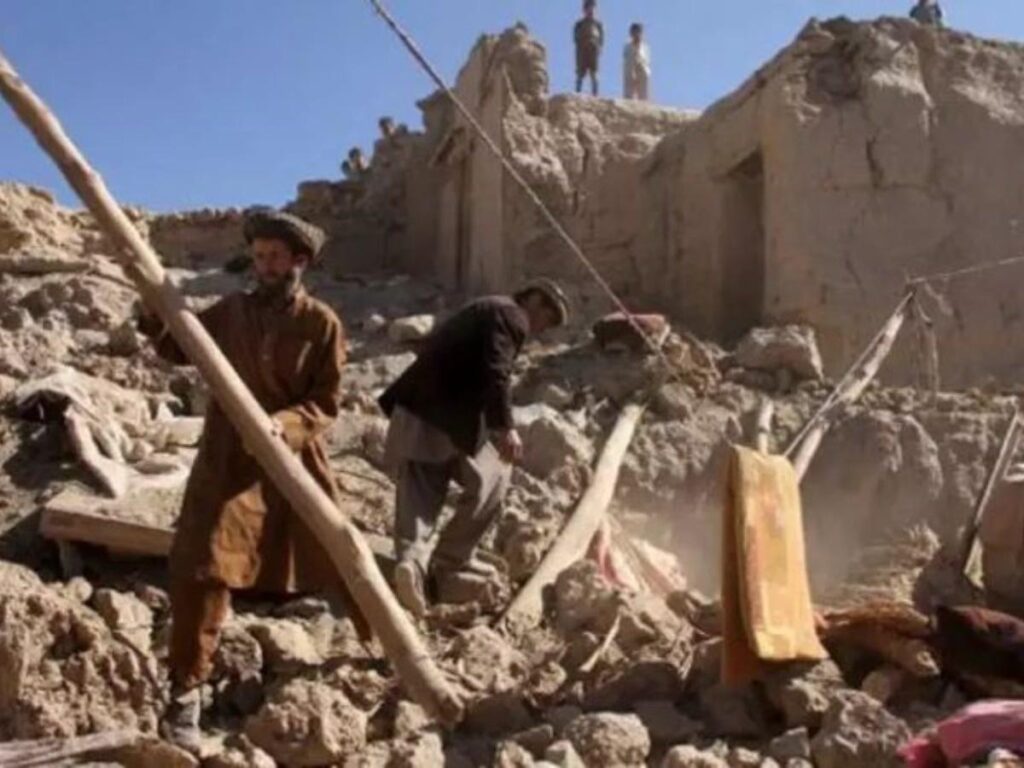
More than 1,000 people have died in earthquakes in Afghanistan, according to the Taliban.
As rescuers searched among the debris of destroyed villages for survivors, the dead toll from a series of earthquakes in western Afghanistan suddenly increased to more than 2,000 people, according to a Taliban spokeswoman.
He informed the Guardian that “more than 2,060 people are dead and more than 10,000 are injured.” Many more people are still hidden behind the debris.
Hard-to-reach locations 19 miles (30 km) from the provincial seat of Herat were shaken by Saturday’s magnitude 6.3 earthquake, which was followed by eight powerful aftershocks. Rural homes were toppled, and terrified city residents fled into the streets.
“Six villages in the Ghoryan area and twelve in Zindeh Jan are completely in ruins. The official continued, “Efforts are being made to remove people, and we anticipate the death toll will climb. “Rescue teams have arrived in Herat from Hellman and Kandahar.
“There is nothing left for the surviving nearby. Food, clothing, tents, and medication are necessary. Poor and isolated places were affected by the earthquake in Afghanistan. They include a large number of refugees who have just returned from Pakistan and Iran. Definitely, we need assistance from abroad.
Another Taliban spokesman added, “We appeal to all international relief organizations to support us at this moment to rescue our countrymen and women’s lives.
As women and children waited in the open and personal possessions from burned homes flailed in the brisk wind, men dug among piles of crumbling masonry.
From all throughout Herat and neighboring provinces, injured people poured into the provincial hospital in Herat.
After the 600-bed hospital was full by Saturday afternoon local time and the Taliban officials constructed a temporary hospital, dozens of patients were being treated outside the facility.
Firooz a resident of Herat spoke on the phone to the Guardian and said, “People were terrified last night after rumours of another earthquake spread.” “Until five in the morning, my family and I were in a park.”
“Last night, many people slept outside. For the protection of residents’ possessions, just two men from our street remained there. The park was where everyone else was. Like a nightmare, it was.
Dawood a resident of the severely affected Zindah Jan district, told the Guardian that “dozens of villages have been completely destroyed” and that “hundreds of people are under the rubble.” “I traveled to Herat with nine of my dead relatives’ bodies, and now I’m returning. Many of the villages’ roads are in poor condition. Tonight, many people will perish beneath the debris.
In the village where my relatives dwell, barely 50 people are still living, Dawood continued. “Until this morning, there were more than 400 residents living there. Here, a catastrophe is developing.
The district’s “high number” of deaths were reported by the local governor after more than ten villages were reduced to ruins. “We urge everyone to assist the [affected] people in these villages.
In at least 12 villages in Herat province, the World Health Organization (WHO) reported that more than 600 homes had been completely or partially destroyed, affecting 4,200 people.
Esmail, a native of Herat, stated, “I was shopping at a market when it started. It was around 11 a.m.” “People raced outside in a hurry. Just as I stepped outside, there was another earthquake, he recalled.
Its duration was shorter than the preceding one. Another followed after that. I then made the decision to go home. While I was outside my home during the following earthquake, a wall collapsed over my cousin, who was 12 years old.
After the Taliban retake power in Afghanistan in 2021, there will be a severe humanitarian crisis due to the widespread withdrawal of Western aid. Stone and mud-brick homes were destroyed in a severe earthquake that struck a rough, mountainous area of the country in June 2022.
With at least 1,000 fatalities and approximately 1,500 injuries, it was the deadliest earthquake to strike Afghanistan in 20 years.
A years-long drought has also affected Herat province, which is home to more than 3 million people and is bordered by Iran. This has severely harmed several agricultural areas that were already struggling.



